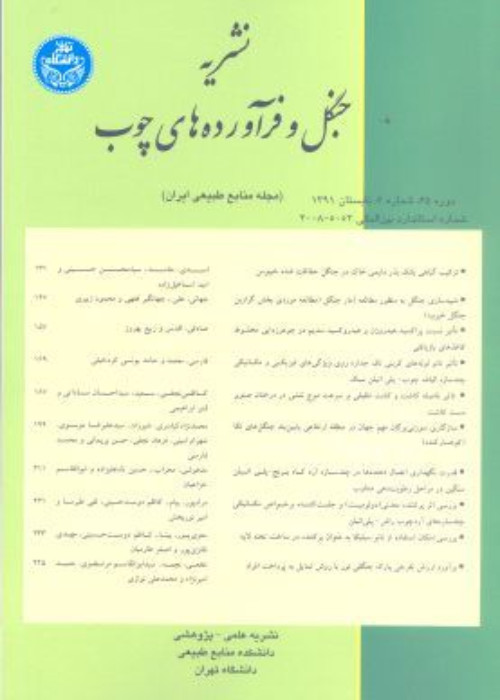Effect of traditional deforestation and exploitation in different slopes on runoff and sediment in Zagros forests (Case study: Surgeh area in Manesht and Qalarang protected areas of Ilam province)
This study was conducted to investigate the effect of degradation due to traditional forest exploitation on runoff and sediment following the change of some soil characteristics in the Zagros vegetation area in Manesht and Qalarang protected areas in the north of Ilam. Based on the objectives of the study, the treatments of degraded forest, intact forest (control) and agricultural lands in the region were considered in three slopes (15, 25 and 35%) and each in three replications. In this study, runoff and sediment due to rainfall were considered. Analysis of variance test was used to investigate the effect of vegetation cover on runoff and sediment, Duncan's test was used to compare means, and Pearson's correlation method was used to determine the significance and extent of each variable measured in the soil on runoff and sediment. The results showed that with increasing the slope, the amount of water infiltration in the soil decreases and as a result, more runoff and sediment is produced. The results showed that the amount of runoff, sediment and runoff coefficient in degraded forest lands is higher than the treatment of intact forest (control) and agricultural lands. In degraded forest lands, the amount of runoff is 5.43 mm and sediment is 0.3671 tons per hectare and in untouched forest lands (control), the amount of runoff is 0.33 mm and sediment is 0.0019 tons per hectare, respectively, and in agricultural lands, the amount of runoff, and sediment were calculated as 22. 0.00 mm and 0.004 t / ha, respectively. The results of correlation coefficient showed that the parameters of acidity, clay percentage, silt percentage had a positive correlation and sand percentage had a negative correlation with runoff and acidity parameters, silt percentage had a positive correlation and sand percentage had a negative correlation with sediment content. According to the results of this study, it can be concluded that eliminating or changing the use of vegetation, especially forest cover reduces the amount of soil permeability and thus increases the amount of soil runoff and sediment. Therefore, by preserving, rehabilitating and developing forest trees and shrubs, as well as preventing the change of use of these lands to agriculture, especially in sloping forest lands, runoff and sediment production can be prevented.
- حق عضویت دریافتی صرف حمایت از نشریات عضو و نگهداری، تکمیل و توسعه مگیران میشود.
- پرداخت حق اشتراک و دانلود مقالات اجازه بازنشر آن در سایر رسانههای چاپی و دیجیتال را به کاربر نمیدهد.



